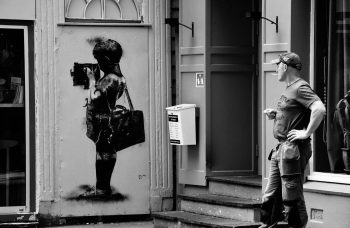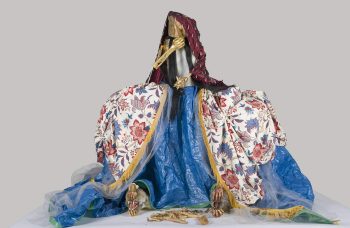Twice each year the Queen of England recognises people, from all kinds of sectors, for their achievements. Most recently, for the Queen’s birthday, a group of esteemed individuals received honours. Among them was artist Frank Bowling, already an officer of the Order of the British Empire, who was knighted for his career and work.
Born in British Guiana, Bowling, now Sir Bowling, moved to England in the 1950s. Over his 60-year career, Bowling has become known for his large-scale abstract works. At age 86, Bowling is now becoming more distinguished within the British art world and his recent honour from the Queen only cements his place in British art.
Bowling is one of very few Black British artists to be knighted and in the past, some have refused the title given the colonialist history of the British Empire. However, Bowling, like artist Steve McQueen, who was honoured in 2019, opted to accept the knighthood.
Upon receiving the honour, Bowling said:
“I’ve set out on a quest to explore the possibilities of paint, and I find myself making something new every time. I have an insatiable determination to experiment with colour, form and process, to create new and original artworks that push the boundaries of the medium, while being intellectually grounded in post-war abstraction. The things that paint can achieve are so vast and diverse that I don’t think I’ll ever be done with it. Trained in the English art school tradition, my identity as a British artist has always been crucial to me and I have viewed London as my home since arriving in 1953 from what was then British Guiana. To be recognised for my contribution to British painting and art history with a knighthood makes me extremely proud. Friends and family have played a role in my studio since the 1960s – as a husband, father, grandfather and recently a great-grandfather, I am honoured to sit at the centre of a modern family to whom I feel much gratitude.”
Bowling’s sons and studio directors, Ben and Sacha Bowling, praised their father’s “dedication and dogged persistence in the face of obstacles throughout his life of painting, including having to deal with stereotypical associations made between his work and origins.” They continued: “The whole family is overjoyed at this news. We couldn’t be prouder of all that our father has achieved.”
After moving the UK in 1953, Bowling received a scholarship to the Royal College of Art in London after serving in the National Royal Air Force. Later, he moved to New York City and in 1967 and 1973, Bowling won fellowships with the Guggenheim as well as a solo exhibition at the Whitney Museum of American Art in 1971. Most recently, Bowling was the focus of a 2019 retrospective at Tate Britain called “The Possibilities of Paint Are Never-Ending,” and he continues to gain fame in the UK. Bowling continues to paint to this day.





